For more than 50 years, the San Francisco skyline has been punctuated by one of the country’s most recognizable office towers, the Transamerica Pyramid. With its four tapered sides narrowing to a pencil-top peak 853 feet high, its pyramid form introduced a new kind of shape into a city dominated by rectilinear boxes when it opened in 1972. Now, a bold but risky $1 billion renovation effort is trying to turn this iconic, aging space into a new urban centerpiece for a pandemic-wracked city. Instead of it just standing out on the skyline, Shvo, the developer behind the project, hopes the famous building will become a catalyst for regeneration.
Located on the edge of San Francisco’s downtown and right at the terminus of one of the city’s main arterial streets, the Transamerica Pyramid has been a kind of transitional space since it opened, marking a shift from the low- and mid-rise commercial districts that spread out from the city’s center. With the skyscrapers of downtown on one side and a much shorter cityscape on the other, the pyramid has always popped from the skyline, only adding to its distinctive stature.
The pyramid has just undergone a thorough internal redesign and renovation that updated its office spaces and added new amenities throughout the building and down on its ground floor. And the site around the pyramid is also being redeveloped, with expanded public access inside its lobby and a more open-facing ground level.
Shvo is also reworking the two other buildings that share the block with the pyramid. One is a 1980s office tower that got a ground floor renovation with new lobby and retail space. The other is a 1930s-era nine-story art deco building that’s getting a 220-foot vertical expansion. A publicly accessible park lined with 150-foot-tall redwood trees, which were planted when the pyramid first opened, has also been upgraded to better connect with the neighborhood beyond its edges. Michael Shvo, chairman and CEO of Shvo, sees the entire site as being ripe for revitalization. Bringing more users to the block, he hopes, will renew the pyramid’s iconic lure.

The rise and fall of a San Francisco pyramid
The pyramid is the biggest piece of this urban puzzle. Designed by the prolific California architect William Pereira, known for the swooping Theme Building at Los Angeles International Airport and CBS’s Television City studios, the Transamerica Pyramid was the tallest building in San Francisco when it opened. Its unconventional shape was the subject of controversy. Protesters tried to block its approval, calling on officials to “stow the shaft,” but Pereira and San Francisco Mayor Joseph Alioto rallied behind it as a sign of the city’s progressive economy and spirit. After completion, it became one of the most sought out office spaces in the city.
The Transamerica Pyramid enjoyed a long reign over the city of San Francisco. It wasn’t until 2016 that another building, the 61-story Salesforce Tower, went higher. But height was never the pyramid’s main attraction. Its unique form and mostly unobstructed position in the city gave it a built-in cache that tended to attract tenants from some of the biggest corporations in the world, including Bank of America, engineering giant URS Corporation, and the financial services firm ATEL Capital Group.
The pandemic changed the office market across the city of San Francisco, which saw average vacancy rates peak at 37% earlier this year. One report cited the Pyramid’s vacancy rate above 30% in 2023, but noted that some was likely due to the renovation underway. The high vacancy rates seen in the city’s office buildings has prompted fears that the whole idea of its downtown office market was a house of cards.
Developer Michael Shvo led a group that bought the pyramid’s one-block site in 2020 for $650 million from Aegon NV, a Dutch insurance company that acquired the pyramid’s namesake company, Transamerica Corporation, in 1999. They’ve since spent another $400 million revamping the tower and its surrounding properties, the Transamerica Pyramid Center, into a modern office complex, with added mixed use, hospitality, and retail, with a design by the U.K.-based architecture firm Foster and Partners.
As the project has progressed, the idea of spending $1 billion on an office complex—even one as notable as the Transamerica Pyramid—has been seen by many as a heavy gamble. But Shvo is not deterred. “It’s a building that was ahead of its time 50 years ago, and it still looks like it’s ahead of its time,” says Shvo. “And that’s our goal, really, to make sure it’s ahead of its time for the next 50 years.”
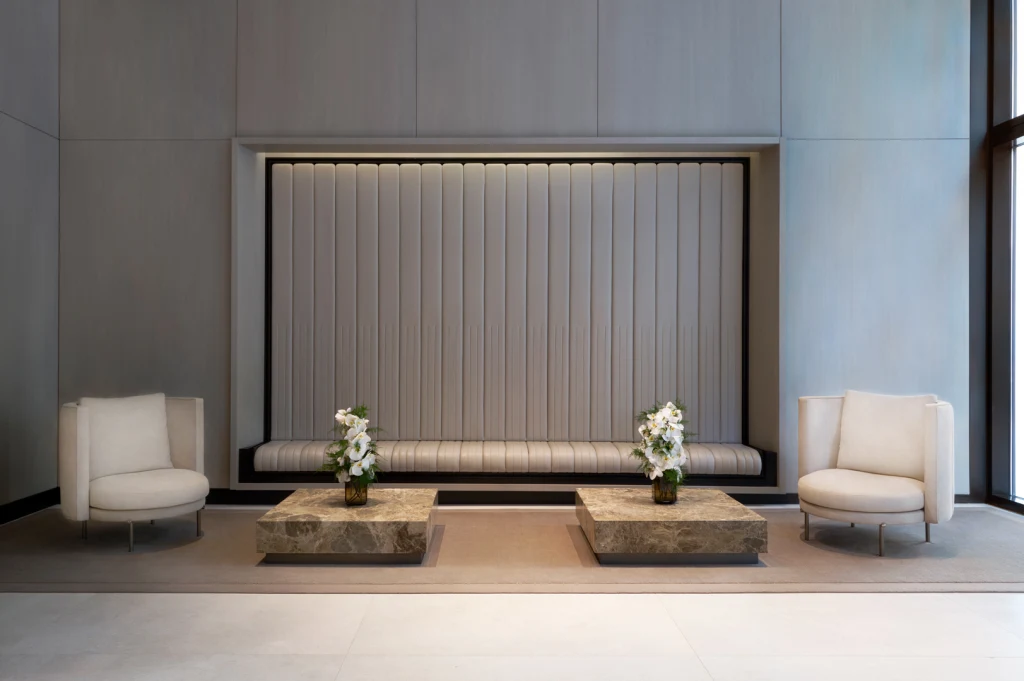
Norman Foster-led renewal
Pritzker Prize winning architect Norman Foster led the pyramid’s full internal renovation, refreshing its dated interiors and replacing underutilized common areas with tenant-centric luxury amenities. Major interventions were made on the ground floor, which has been heightened 10 feet by removing old drop ceilings and cladding, along with the addition of a formal reception desk in a space once unceremoniously occupied by a mechanical room.
The entire ground floor has also been updated with more transparent windows that celebrate the original building’s innovative cross-bracing structural system, which perches the pyramid atop a scaffold of triangular beams. “It’s rediscovering the materiality of the structure,” Foster says. “In many ways, the structure is the architecture and the architecture is the structure.”
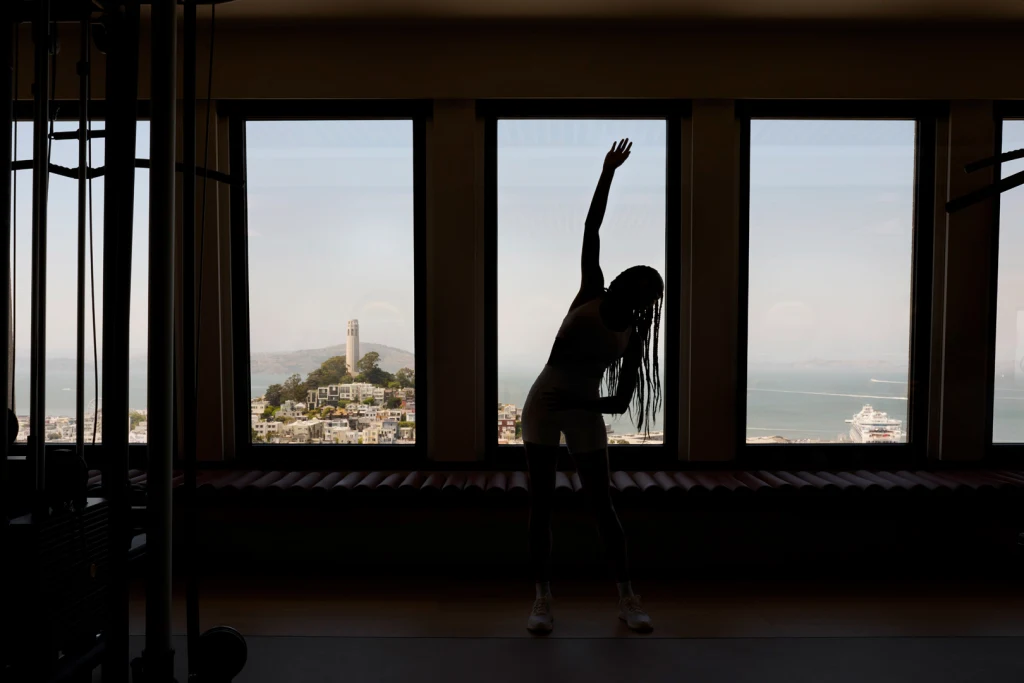
Foster’s firm also outfitted the building with interior finishes and furnishings that evoke the early 1970s while providing modern elements tenants have come to expect from trophy office buildings. A mid-building lobby and lounge space has is now on the 27th floor, with a restaurant, informal meeting areas, and board-style conference rooms. The floor below houses a gym and spa for tenants and the building’s top floor is now a private bar with panoramic views of the city. “Everything on the inside is brand new,” says Shvo. “But the design of the building, the exterior architecture, is a 1972 body. It’s a very unique situation.”
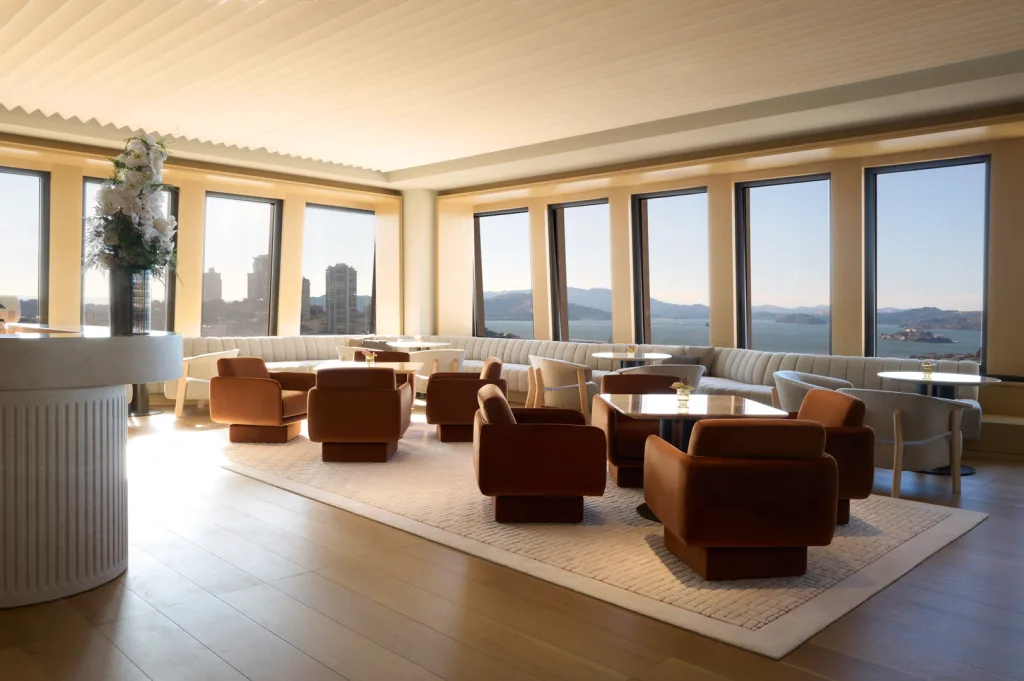
But the pyramid doesn’t stand alone. Foster has his own depth of experience with iconic buildings, including a distinctively shaped tower his firm designed on the London skyline known as the Gherkin. He recognizes the pitfalls of thinking only at the skyline level. He says his firm was drawn to the design competition for the Transamerica Pyramid Center for what the entire site could add to San Francisco’s troubled downtown. “I know that the building attracts the conversation and the attention, but I think the appeal of this project goes beyond the tower,” Foster says. “It’s the potential to take an entire city block and use it as a catalyst for regeneration.”
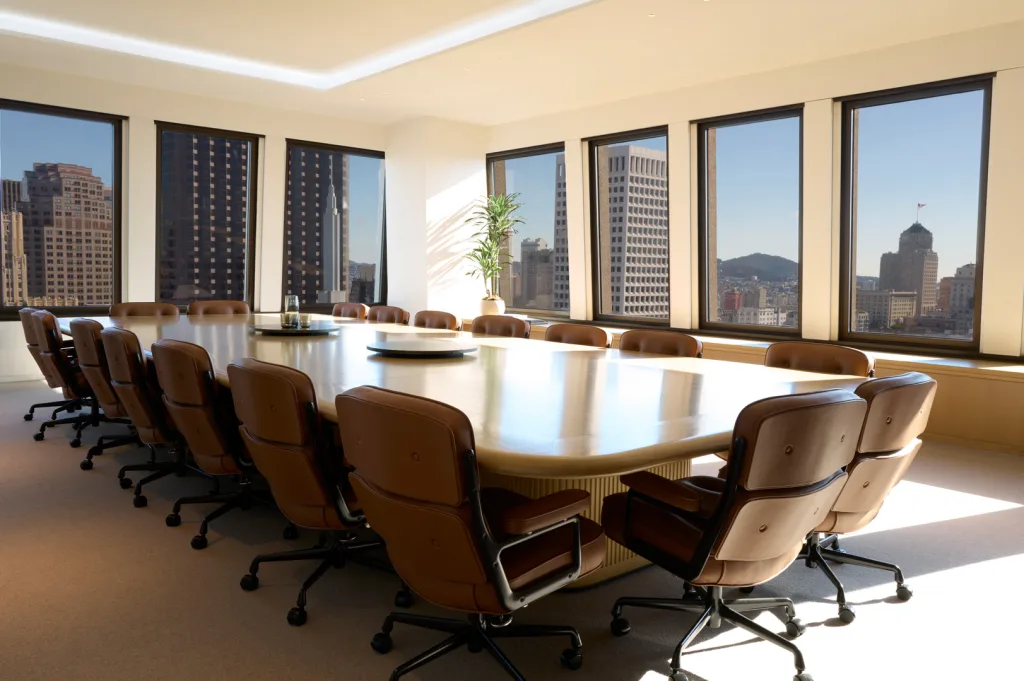
Keeping the Pyramid a trophy building
San Francisco, like many cities, could use the help. Office buildings in the Bay Area city are facing historic levels of emptiness, prompting fears about downward economic spirals, doom loops, and barren skyscrapers going into default. “As we look right now, we see 37% vacancy in the market. That’s a lot of space,” says Colin Yasukochi, executive director of the commercial real estate services firm CBRE’s Tech Insights Center. But he says prime or trophy buildings like the Transamerica Pyramid are still in high demand. A recent report from CBRE shows that nicer buildings tend to have much lower vacancy rates and bring in much higher rents than older or less amenity-filled spaces. “You can clearly see there’s a separation by quality of building,” Yasukochi says.

But it’s not just the newer buildings that are able to survive. In San Francisco, where Yasukochi is based, many of these trophy office buildings tend to be older, but with great locations and even better views. He says buildings like the Transamerica Pyramid use these strengths to stand out from newer competitors. “A lot of these trophy buildings are timeless in the sense that they’ve been well maintained and improved over the years to maintain that quality level. So just because a building may be 40 or 50 years old doesn’t necessarily mean it can’t be a trophy building,” he says.
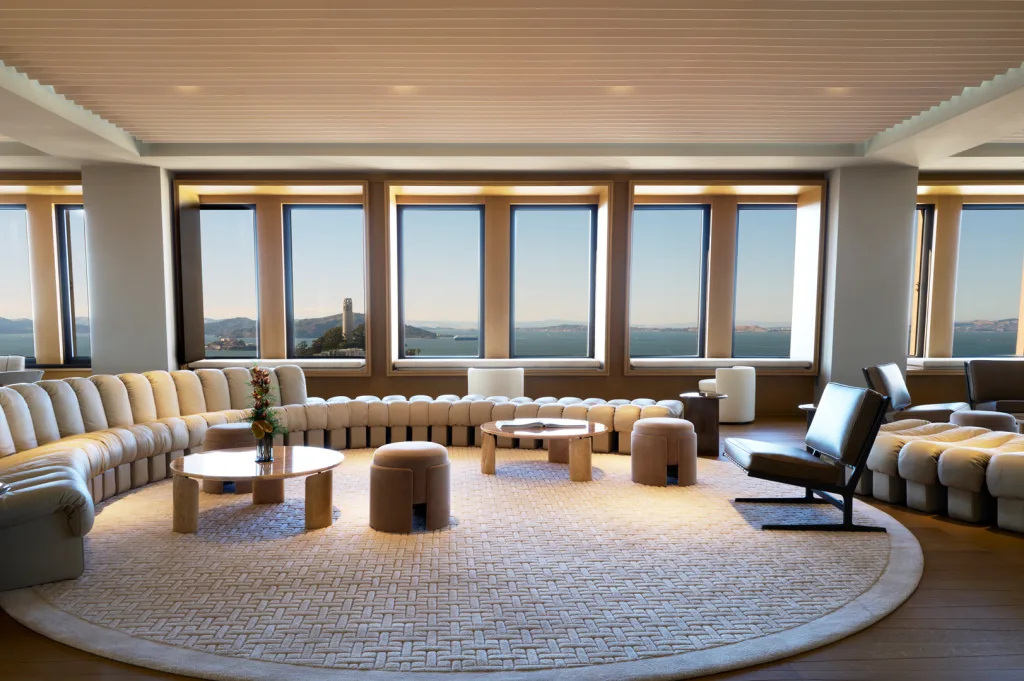
Shvo’s approach with the Transamerica Pyramid Center is to lean into the history of the building and the strengths of the site, while beefing up the amenities in and around the building to make it a place people want to work. That ranges from the private spa and bar inside the tower to the sculpture garden rising within the existing redwood grove outside. “People come to work in order to collaborate. It’s hard to collaborate on Zoom. I believe that sitting together and working together is always your better means of collaboration,” Shvo says. “Earning the commute is something that is really important.”
Shvo has used the building’s renovation and offerings to bump up leasing prices to what Shvo says is $200 per square foot for several new leases—more than triple the city’s average—making it one of the most expensive office properties in the country. But some of that value may be in question. Shvo faces legal disputes from Core Club, the operator of a private members club planned for this building and currently operating in another of Shvo’s projects in New York. The company alleges Shvo mismanaged the buildout of the club’s facilities in New York and wants out of its lease in San Francisco.

That could leave some of the building’s prime space empty, but Shvo’s company says the building’s main tenant-centric amenities will still be available. Those features, in conjunction with the lobby improvements and semipublic park spaces outside, will be what lures tenants in, according to Shvo.
He says he’s already signed big leases with several major companies, including a big law firm, a financial services company, and a private equity firm. “It’s not a single-industry building,” Shvo says. “We’re appealing to tenants that are at the top of the game within their industry.” Shvo says some tenants have remained in the building since before the renovation, though when he acquired the building many leases were scheduled to expire within five years. The new leases he’s announced publicly are located near the top of the building and have come in at the record-setting $200 per square foot price range.
However the building fills out, the work has been done to keep the Transamerica Pyramid functioning for the foreseeable future. With its location, views, and iconic nature, that may be enough to keep it afloat, even as office buildings across the city—and around the world—struggle to remain relevant. Foster calls the project a mark of optimism about the future.
“It is about regeneration, not just of a building, not just of a city block, but the potential for that to have a ripple effect,” Foster says. “I think it’s progressive, I think it’s quite courageous, and we were attracted to it for all of those reasons.”